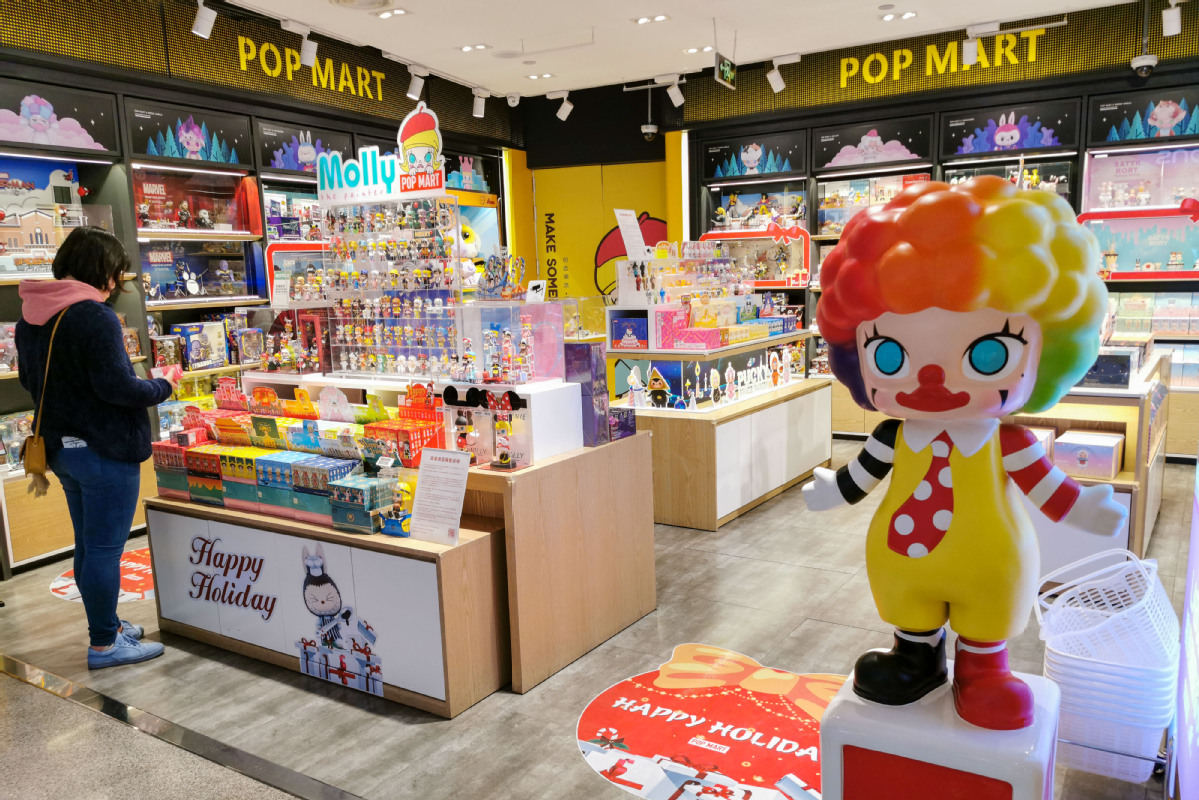Local toymaker wins market with innovation
By Wang Zhuoqiong | China Daily | Updated: 2020-01-03 10:06

In China's first-and second-tier cities like Beijing and Shanghai, Pop Mart has about 130 retail stores and more than 700 machine terminals, making it the largest art toy retailer in China. It has cooperated with well-known brands and artists around the world and launched a variety of popular art toys.
In 2017, Pop Mart publicly listed on the National Equities Exchange and Quotations, known as the "new third board", with a loss of 30 million yuan. In the following year, the company made a profit of 8 million yuan. In the first half of the third year after listing, Pop Mart reached a profit of 25 million yuan. The company went private in March 2019.
A total of 65 percent of Pop Mart's business comes from brick-and-mortar stores and the rest comes from online sales. Wang believes offline stores serve as a channel to not only sell products, but also create a space to cultivate a sense of culture.
According to global asset ranking firm Hurun, Pop Mart's capacity in building its own intellectual property supply chain-designing, manufacturing and retailing-has contributed to its sudden surge in the retail and entertainment sector.
"Our business is to commercialize and industrialize what artists have created," Wang said. "It is a pity that an artist can sell only 200 pieces of artwork. I want to bring them to a mainstream audience through our platforms and the ecology we have built."
Speaking about what makes art toys popular in China, Wang said it sometimes requires decades of cultivation for major international intellectual property such as Star Wars to make an impression on Chinese people. But art takes less time and effort, he said. "You could be moved to tears just by looking at a painting simply because it moves you," he said. "That is probably the charm of Molly."
According to Wang, art toys are popular with adults because they meet their desire to preserve rare and collectible figures, especially those hidden in blind boxes.
"Collecting is a natural human desire," said Wang. "Collecting art toys is similar to older generations collecting stamps, or rich people collecting paintings and antiques, girls collecting bags and boys sneakers."
Besides encouraging collecting, Pop Mart has cashed in on the popularity of its products in the secondhand trade market.
According to Xianyu, Alibaba's online platform for secondhand goods, since the second half of 2018, more than 300,000 blind boxes have been traded, with Molly toys traded more than 230,000 times.
Wang said the reason people want to trade and collect art toys such as Molly is the strong demand for the toys. "What has been revealed from the secondhand market is the tip of the iceberg," Wang said.
The desire for individuals to please themselves is also a market opportunity. Wang compares buying blind box toys to sending gifts to yourself. Opening a blind box and finding a rare figure involves anticipation, surprise and delight, he said.
























